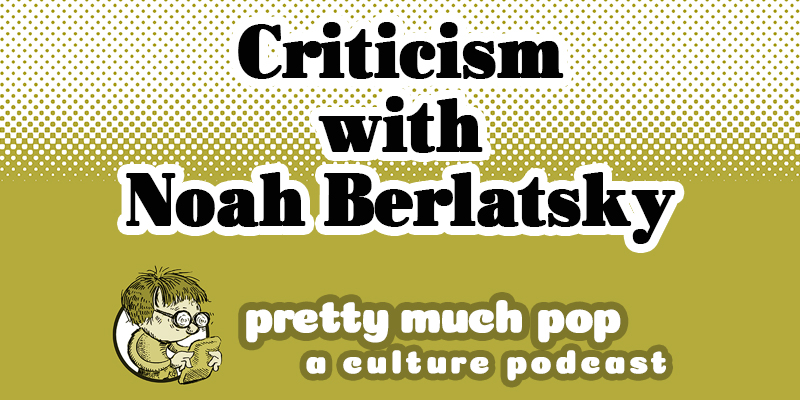
Do we need professional critics regulating our entertainment intake? Noah has written for numerous publications including The Washington Post, The Atlantic, NBC News, The Guardian, Slate, and Vox, and his work has come up for discussion in multiple past Pretty Much Pop episodes.
He was invited to join hosts Mark Linsenmayer, Erica Spyres, and Brian Hirt in spelling out the functions of criticism, the idea of criticism as art, ideological vs. aesthetic critique, and whether there’s anything wrong with being negative about other people’s art. While we talk mostly about film, Noah also writes about TV, comics, music and more.
First, read some articles by Noah about criticism:
- “Why Hate?”
- “Hemingway vs. Ken Russell: Or Why You Should Compare Apples and Oranges”
- “On Art as Criticism and Criticism as Art”
- “In Praise of Criticism”
Other authors speaking on the utility of critics:
- “Do We Still Need Critics in This Age of Opinion?” by Sarah Donaldson
- “Are Music Critics Pointless?” by Emily Zemler
- “Accentuate the Positive: Why Music Critics Write So Many Favorable Reviews” by Timothy Gabrielle
- National Review critic Armond White talking about this on the Slashfilm podcast
Here are some examples of Noah’s critical work relevant to what came up in the interview and our recent episodes:
- His review of 1917
- His pox-on-both-houses take on Scorsese and Marvel
- On Midsommar and Wicker Man
- What The Good Place finale inspired him to write
- His take on the Beatles-obsessed film Yesterday
- One of his many articles on Twilight
Included here with Noah’s permission, here’s some criticism directed at Noah:
- “Why Doesn’t the Atlantic Fire Noah Berlatsky?” by Ted Rall
- “The Rant: Who the Hell is Noah Berlatsky & Why Is He Trashing Bob Dylan?” by Michael Goldberg
- “Worst Op-Ed of the Year? We Have a Weiner and His Name Is Noah Berlatsky” by Ken Silverstein
At the end, after Noah leaves, Mark lays out a taxonomy of criticism: supporter, decoder, taste enforcer, and hater. Noah practices all of these! Follow him on Twitter @nberlat and get scads of his writing by supporting him at patreon.com/noahberlatsky.
Watch Mel Brooks’ depiction of the very first critic.
This episode includes bonus discussion that you can only hear by supporting the podcast at patreon.com/prettymuchpop. This podcast is part of the Partially Examined Life podcast network.
Pretty Much Pop: A Culture Podcast is the first podcast curated by Open Culture. Browse all Pretty Much Pop posts or start with the first episode.









